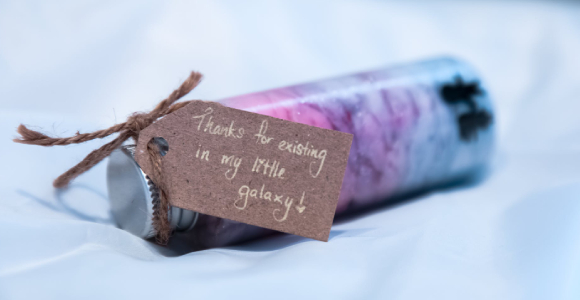9+ Wedding Thank-You Card Examples to Download
As the day you’ve been waiting for all your life comes to a close, you can’t help but feel grateful for the gift of family and friends. Without them, your wedding day wouldn’t be as magical as it is. A great way to show your appreciation to guests is to send a card templates are specially crafted for the occasion. To help you get started with your card, it’s best to use a template that you can easily personalize to meet your preferences.
Beach Wedding Thank-You Card
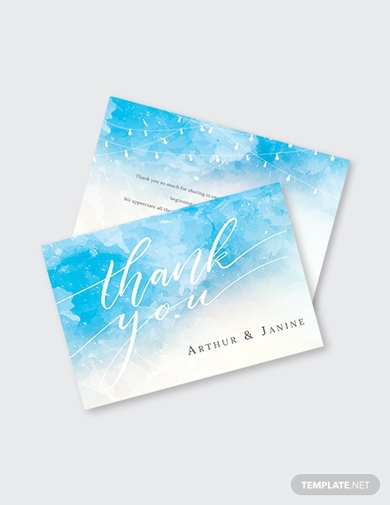
A destination wedding is like a page from your favorite fairy tale. There’s something about hearing the waves crash onto the shore as you see the sun slowly set on the horizon. It’s a wonderful day that marks the beginning of a new chapter. To show your gratitude toward the people who made your day extra special, this beach wedding thank-you card would be the perfect option. The pastel blue colors of the card are a reflection of the water that surrounded you and your partner during the most significant day of your lives.
Beautiful Wedding Thank-You Card
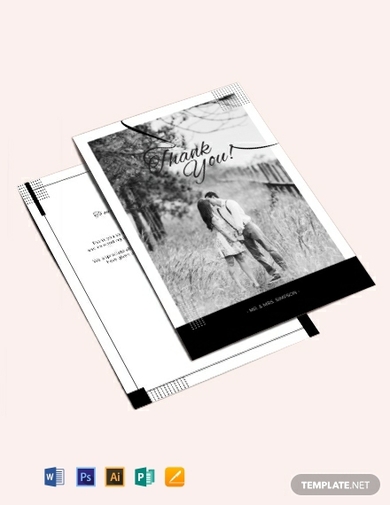
If you’re looking for a simple way to show your gratitude toward guests of your wedding, this beautiful thank-you card can help you get a message across in the most creative way possible. Although templates are useful in terms of crafting the final layout of your card, it’s always best to personalize the content of your card with your own message. You can keep it as brief or as lengthy as possible, as long as you have expressed what you meant to say in the main body of the thank-you card.
Best Wedding Thank-You Card Examples & Templates
Chalkboard Wedding Thank-You Card
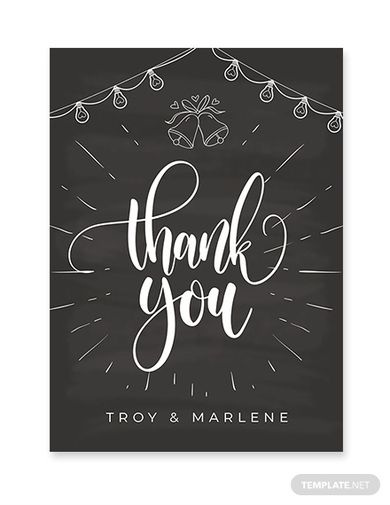
If you aren’t into the cheesy and sappy gestures that most couples seem to like, you can cut to the chase by printing your words of thanks in a simple chalkboard card. Chalkboard menus and chalkboard invitations are pretty popular in the market, so you might want to incorporate the design into your thank-you card to obtain a fresh and modern look. It’s the perfect choice for those who wish to cut down on printing costs without having to sacrifice on the appearance and quality of their wedding stationery.
Simple Wedding Photo Thank-You Card
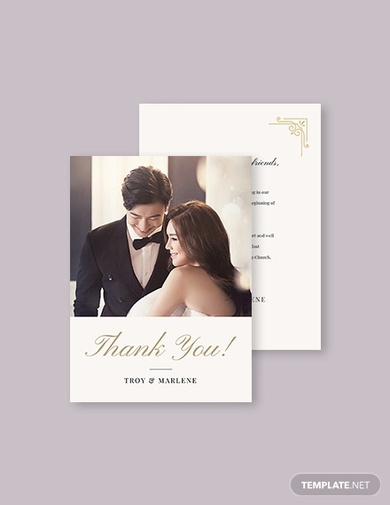
These days, a lot of couples invest in prenup shoots and photography packages to cover every aspect of their union. These images are usually shared to family and friends of the bride and groom by displaying wedding banners and albums around the venue. Another way to share these images is through your thank-you card. Simply edit the content of the card and replace it with the photographs you’ve selected and your written copy. Photo thank-you cards are bound to make your celebration even more memorable for you and your loved ones to cherish.
Burgundy Floral Wedding Thank-You Card

It’s always a good idea to choose a design that clearly represents the motif of your wedding. Florals are a common option to begin with, so if you’re considering this thought, you might be interested in this burgundy floral thank-you card. The elegant display of flowers is a visual masterpiece that can make your card even more valuable to recipients. The colors and fonts of the thank-you card also provide a sense of formality and sophistication to the material. That way, guests are prompted to read the message and keep the card for as long as they wish.
Fall Wedding Thank-You Card
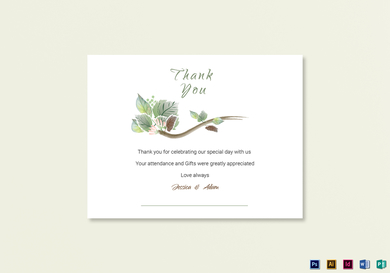
The most popular months to tie the knot are June, September, and October due to how beautiful the weather can be during the first and last weeks of fall. It’s also a time when wedding designs are of a wider selection due to the essence of the season. That being said, consider using this fall wedding thank-you card to show your appreciation to everyone who sponsored, attended, and took part in the wedding preparations.
Floral Wedding Thank-You Card
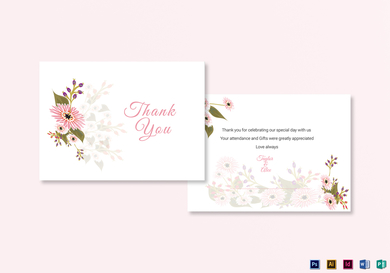
Another option in the range of floral wedding designs, this thank-you card design illustrates the formality and elegance of the celebration in the most captivating way possible. This is a concept that will complement almost any type of wedding theme you can think of. You can add this to your collection of wedding stationery to use when you need to. Sending this card to your family and friends as a way of thanking them for their time and presence will definitely mean a lot to each recipient.
Nautical Wedding Thank-You Card
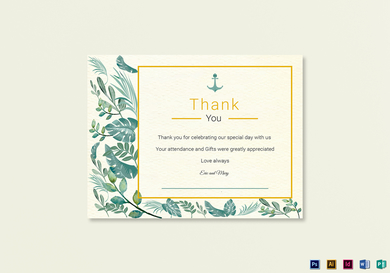
Anyone who is fascinated or is in the field of maritime is likely to choose a nautical theme for their wedding. As you prepare for your big day, you need to make sure you have your thank-you cards ready for the after party as well. One way to save time and effort is to use a template for your stationery. The template above is perfect for couples who want something simple yet stunning enough to make a statement.
Wedding Thank-You Card
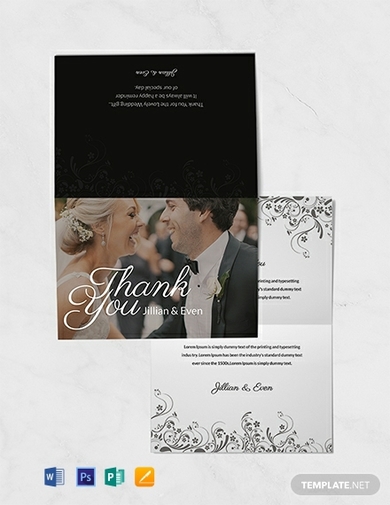
Thank-you cards come in a variety of shapes and sizes. If you need something that you can easily fit into an envelope, this foldable thank-you card is the answer to your problems. You can mail the card to everyone in your guest list to thank them for coming to share this milestone with you. It’s a common gesture that couples do as a sign of respect and gratitude for the time that was spent to make everything possible.
Formal Wedding Thank-You Card
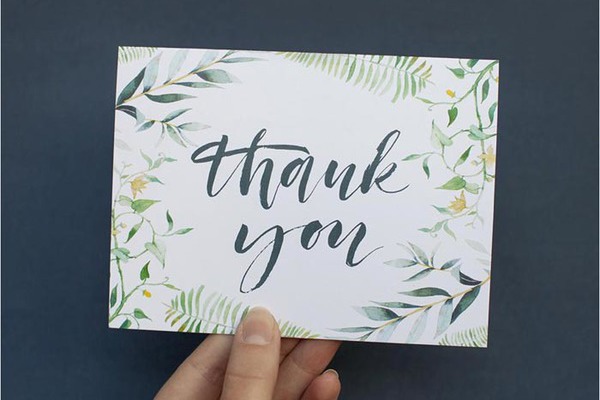
Shown above is an example of a thank-you card that you can design for your special day. You can give it away along with your wedding tokens or send the card a day or so after the ceremony. Handcrafted cards are always a better alternative to the mass-produced cards you can find at the store. A personalized thank-you card is sure to generate the desired response from your recipients!


